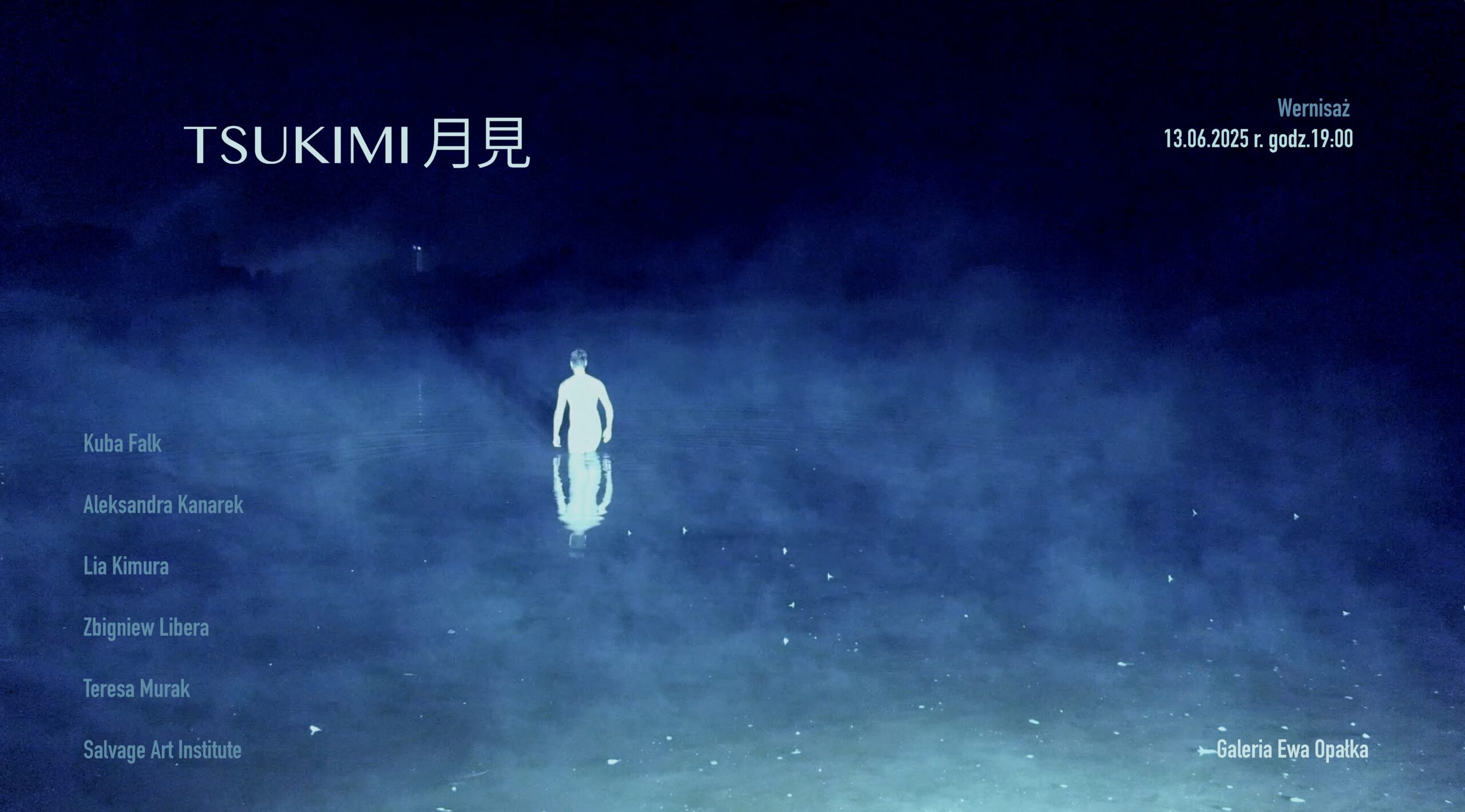TSUKIMI 月見


Matsuo Bashō
あさむつや月見の旅の明け離れ
asamutsu ya / tsukimi no tabi no / ake-banare
„Six in the morning — / my journey beyond the moon / ends at dawn.”
The Japanese word tsukimi translates literally as “moon-viewing.” This philosophical and aesthetic term is associated with the autumn festival that takes place during the eighth month of the lunar calendar, which is now celebrated in Japan in mid-September. The concept originated during the Heian period (794–1185 CE), when its observance was accompanied by the composition of waka poetry and musical performances. During the autumn full moon, aristocrats celebrating the festival would also sail boats onto open water to contemplate the moon reflected on its surface.
Tsukimi carries a melancholic quality — it is a kind of tribute to impermanence. It embraces imperfection, asymmetry, ethereality, and the cyclicality of nature. Transience is considered the very condition for experiencing profound beauty. Ephemerality and change are valued intrinsically. At the same time, tsukimi, in a way characteristic of Japanese culture, is close to animism and Shintoism, where the spiritual is rooted in nature. It emphasizes the interpenetration with nature, standing in contrast to the Western cultural tendency to transcend nature, which consistently favors the model of overcoming the temporal through enclosing ideas within a closed, finite object.
*

Lia Kimura, Glimmer, 2025, oil on canvas, 80 x 60 cm
In the painting and inspirations of Lia Kimura, we also find a kind of indeterminacy and ethereality, rooted in the (im)possibility of identifying solely with either Japanese or Polish culture. Kimura grew up in both countries and still maintains studios in both Warsaw and near Tokyo. Of one of her recent paintings — whose form lies between figuration and the artist’s increasingly visible inclination toward abstraction — she writes: “It’s a portrait of someone who is not really visible, because they are buried beneath layers of paint, submerged, as if suspended between being and disappearing. Only the tears remain, which are a bit like the Madonna’s tears (…) they look more like jewelry, something that adorns, instead of only speaking of pain. (…) I guess it’s a painting about emotions we hide beneath the surface, but that still somehow seep through. It’s not a portrait of one person. It’s more a state. A presence that doesn’t need a face.”

Kuba Falk, Self-portrait with stars, 2015/2025, color photograph, 75 x 105 cm
Kuba Falk‘s photograph Self-portrait with stars was taken during one of the artist’s trips to South America. A nighttime journey through the Brazilian landscape reveals a star-filled sky and the fusion of the human figure with nature in a cosmic context. The long exposure and use of simple tools — such as light from a cell phone to illuminate the silhouette — create an effect of uncanniness and ethereality in the captured body. “I am not queer, I am disembodied” — the famous line from William Burroughs’s novel Queer takes on new meaning in Falk’s photograph.

Teresa Murak, Untitled from the series Drawings for the Earth, 1990, artist’s own technique, 60 x 70 cm
“As a result of my wanderings toward the river’s source, I found a place for the sculpture (…). It’s a quadrilateral about 40 meters across (…). The next quadrilateral is cracked in the center, split into two triangles, a fissure leading deep into the earth.”
Teresa Murak is an iconic artist whose work emphasizes process and cyclicality, foregrounding plant growth and the relationship of the embodied subject to nature. The work presented was created at the intersection of her Drawings for the Earth and Visitation Nuns’ Rags cycles, in which she explores the idea of creating a land art piece that is less an intervention and more an expression of the natural terrain’s conditions. One such version is Sculpture for the Earth, realized in 1996 for Sammlung Hoffmann in Berlin. As the artist wrote in 1989.

SAI 0063: Materials: 23-karat gold, wood, fabric; Dimensions: medallion: 7.6 x 7.6 cm, box: 5.9 x 15.9 x 3.2 cm; Damage: bend due to impact; Claim: around October 2007; Total loss: 2007; Production: 1973; Artist: Pablo Picasso (1881–1973), stamped on reverse with the signature and goldsmith’s mark of François and Pierre Hugo; Title: Petit barbu, edition 3/20
SAI 0063 (damaged work by Pablo Picasso Petit barbu, 1973)* originates from the collection of the Salvage Art Institute, whose name is drawn from the language of art insurance and refers to works that — due to accidental damage — have been removed from the art market. The Salvage Art Institute becomes a sanctuary for these works, a place where recovered art gains new meaning and becomes a space for reflecting on the rules that shape their value — financial, aesthetic, and social.

Zbigniew Libera, La Vue, 2004- 2006, color photograph, 100 x 150 cm
La vue Zbigniew Libera is a series of large-format photographs created between 2004 and 2006. Taken with a small-format camera on celluloid film, the images depict views that form around the gaps between the pages of colorful magazines or photo albums. These are landscapes of contemporary “unconsciousness,” images created from unrecognized fragments of photographs from the press cosmos of the information age and the era of “mechanical reproduction.”

Aleksandra Kanarek, From the red tree, 2023, infrared color photograph, 110 x 88 cm
Meanwhile, Aleksandra Kanarek‘s photograph From the red tree was taken using a camera equipped with an infrared filter that blocks visible light while allowing infrared waves to reach the camera sensor. This means that the image is produced without a live preview, through a long exposure of a carefully pre-planned scene. It is a work about matrilineality, whose “root” is the shadow of the artist’s grandmother, the “tree” — the silhouette of her mother in a red dress passed down through generations. The artist is also present in the image, though invisible, dispersed in the generationally “inherited” red. It is a story about circulation, the flow of energy, matter, and dreams.
Curator: Ewa Opałka